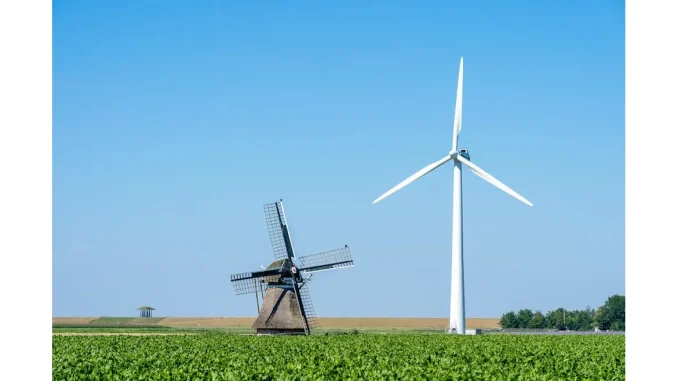
In an era where sustainability is paramount, the decisions we make within our homes hold significant potential to influence both our environmental impact and financial wellbeing. From adopting energy-efficient lighting to integrating smart home technologies, there are a myriad of eco-friendly handyman tips that homeowners can utilise to enhance their living spaces. These strategies not only reduce one’s carbon footprint but also result in substantial cost savings, thereby contributing to a greener future whilst fostering a healthier living environment.
Read more about sustainable development.
One of the most straightforward and effective changes homeowners can implement is the transition to LED lighting. LED bulbs are renowned for their energy efficiency, consuming approximately 75% less energy than traditional incandescent bulbs and boasting a considerably longer lifespan. This shift not only translates to marked energy savings but also leads to a noticeable decrease in electricity bills over time. The initial expenditure on LED bulbs is quickly recuperated, making them a prudent and environmentally responsible choice.
Beyond lighting, the selection of high-efficiency appliances plays a pivotal role in diminishing energy consumption within the home. Contemporary high-efficiency models are engineered to utilise less energy and water, which results in long-term savings on utility costs and a reduced environmental footprint. For example, energy-efficient refrigerators, washing machines, and dishwashers are designed to consume significantly less power and water compared to their older counterparts. By investing in these appliances, homeowners can ensure that their daily routines are more sustainable and economically beneficial.
Solar panels present another formidable solution for those seeking to lessen their dependence on non-renewable energy sources. By harnessing solar power, these panels can generate electricity, heat water, and even power entire homes. Although the initial installation costs can be considerable, the long-term advantages include reduced energy bills and a smaller carbon footprint. Moreover, solar panels can enhance property values, rendering them a valuable investment for environmentally conscious homeowners.
Water conservation is equally crucial for sustainability. Installing low-flow fixtures in bathrooms and kitchens can significantly reduce water usage without compromising performance. These fixtures are designed to decrease water flow while maintaining adequate pressure, making them an effective means of conserving water. Additionally, rainwater harvesting systems provide an innovative solution by collecting and storing rainwater for various household uses such as watering plants, flushing toilets, and washing clothes. This practice not only curtails water waste but also aids in the conservation of freshwater resources.
Embracing smart home technologies can further augment a home’s efficiency and sustainability. Smart thermostats, for instance, optimise heating and cooling preferences by learning a homeowner’s schedule and adjusting temperatures accordingly. This ensures that energy is not squandered on heating or cooling an unoccupied home. Similarly, home energy monitors offer real-time tracking of energy usage, enabling homeowners to make informed adjustments that enhance energy efficiency. These technologies not only improve home comfort but also contribute to a significant reduction in overall energy consumption.
Opting for eco-conscious professionals for home repairs and upgrades can profoundly minimise environmental impact. Contractors with green building certifications such as LEED (Leadership in Energy and Environmental Design) or BREEAM (Building Research Establishment Environmental Assessment Method) prioritise the use of eco-friendly materials and methods. These certified professionals ensure that sustainable practices are integrated throughout the project, from the sourcing of materials to construction techniques. By choosing certified experts, homeowners can be assured that their upgrades adhere to sustainable principles.
Incorporating sustainable materials into home upgrades not only adds aesthetic value but also reduces the necessity for new resources. Reclaimed wood and recycled metal are excellent choices for homeowners looking to introduce natural elements into their homes. These materials not only enhance the visual appeal of a space but also promote sustainable forestry practices and resource conservation. Additionally, using materials with a history can imbue home decor with unique character and personal significance.
Maintaining indoor air quality is another critical aspect of sustainable living. Selecting low-VOC (volatile organic compounds) or VOC-free paints is essential for minimising exposure to harmful chemicals. Traditional paints can emit toxic fumes that negatively impact indoor air quality, leading to health issues such as headaches and respiratory problems. By choosing low-VOC or VOC-free alternatives, homeowners can create a healthier indoor environment for themselves and their families.
Green building certifications serve as indicators of professionals committed to eco-conscious practices. By collaborating with certified experts, homeowners can ensure that sustainable choices are prioritised in home repairs and renovations. These certifications, such as LEED or BREEAM, reflect a commitment to environmental stewardship and sustainable building practices. Working with certified professionals guarantees that every facet of a home upgrade aligns with green principles, further supporting the objective of creating a more sustainable living space.
Ultimately, sustainable living practices provide dual benefits: they safeguard the planet and enhance the quality of our living environments. By integrating eco-friendly handyman tips into home upgrades, individuals can play a significant role in fostering a greener future for subsequent generations. Each small change, from energy-efficient lighting to water conservation techniques, contributes to the creation of a more environmentally friendly living space. By making informed decisions and executing sustainable upgrades, homeowners can enjoy cost savings and environmental stewardship, cultivating a healthier and more sustainable living environment for themselves and future generations. The pathway to a greener home begins with a single step, and collectively, these steps can lead to a substantial positive impact on our world.


Be the first to comment